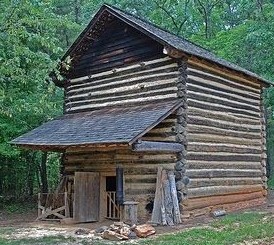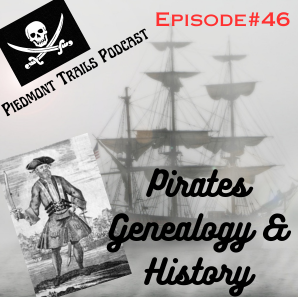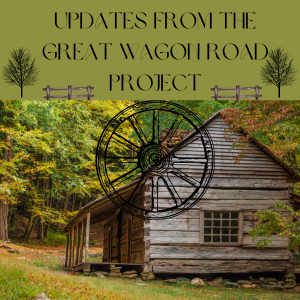If you have searched through the Piedmont Trails Library, you have seen the vast number of Civil War books we have on hand. While researching family lineage, we’ve discovered relatives who participated on both sides of the war and many who lost their lives in battle or sickness. Hundreds of thousands of men and women still wait for their stories to be known. Historians continue the research as they document these individuals who linger in the past, waiting for someone to listen and learn. Today, Piedmont Trails will share one of these stories that occurred in the winter of 1863. The war is going on its twenty-second month, soon approaching its second year, and the families living in the piedmont region continue living life one day at a time. The date is February 12th, and the Militia and the Home Guard have recently taken center stage in the Tarheel state. Men exempt from fighting between the ages of 18 to 50 are now beginning to hear new rumors about the Home Guard. Governor Vance moves forward with plans to legalize the Home Guard units with the power to arrest, pursue, and kill deserters. But this new law would not take shape until July 1863. Our story develops four months earlier in rural North Carolina along Deep Creek, nestled in Yadkin County. Picture in your mind; a cold day with brisk winds settling over the county. The sun rises which quickly melts the freshly fallen snow on the ground. It was a Thursday that began like any other. The continuation of the war was wearing down on the local families as many rejected its morals, higher taxes, and conscription laws. Effective April 16th, 1862, the Confederate States required all males between 18 and 35 to serve three years in the Confederate Army. Anyone exempted faced automatic enrollment in the local Home Guard. Later, the age changed from 35 to 45.

The duty of the Home Guard in the first years of the Civil War involved protecting local supplies, bridges, roads, and the community. After the winter of 1862, deserters became a large-scale problem in North Carolina and other states. The number of families living in the foothills, western mountains, and the piedmont region grew with their opinions against the war efforts. Even the Union Army experienced the same fate, such as the New York riots in 1863. Several North Carolina Home Guard units and Militia groups went beyond their current legal standings and pursued deserters with bold, fierce actions. North Carolina Supreme Court Chief Justice Richmond M. Pearson, a Yadkin County native, ruled in early 1863 that the militia had no authority to apprehend or arrest deserters. This ruling is critical information, as you will later see. The judge’s decision pertains partially to the actions of February 12th, 1863, and the death of Hamptonville resident James West.
James Pierce West was born in Surry County circa 1818 to Jonathan and Polly Pierce West. Jonathan’s father, Isaiah, migrated from Baltimore, Maryland, to North Carolina in 1778. The West family dates to the 17th century in Maryland, beginning with Robert West in 1691. James was the couple’s eldest and only son; his stepbrothers and stepsisters numbered at least nine from his father’s second marriage. James lives with his grandfather, Isaiah, during the 1850 census in Surry County, North Carolina. At age 34, James seeks matrimony. Annie Pinnix and James West married Sunday, April 18th, 1852, in Yadkin County, North Carolina. The Justice of the Peace, J. H. Bohannon, performed the ceremony, and the clerk, T.S. Martin, was a witness. Frederick Rinehart lists as the bondsman. The couple lived along Deep Creek after West purchased 341 acres from George Holcomb in 1854.



The Deep Creek Friends Meeting House stood on the north end of Deep Creek. The origins date to the late 18th century, and Quakers would gather together for worship since 1781. James Bond donated the land, and by 1835, a small school took shape that operated in the area until 1935, a hundred years later. The original school building was the site of the shootout in February 1863. People who viewed the war as senseless or against their personal beliefs paid dearly for their morals. Ridiculed by neighbors and once friends, the Quakers in Yadkin County suffered greatly. Many of these families left the area after the war. Names from the 1793 membership roll are as follows:
- Adams
- Barnard
- Barnet
- Bills
- Bond
- Brion
- Brown
- Burnsides
- Coffin
- Davis
- Dobbins
- Farmer
- Hadley
- Hinshaw
- Hobson
- Hough
- Huff
- Hutchens
- Johnson
- Jones
- Keys
- Noblet
- Pearson
- Phillips
- Reece
- Russell
- Shugart
- Stanfield
- Stanley
- Stockton
- Vestal
- Welch
- Worth
- Zachery
Many of the surnames listed above are family members of the men meeting at the Bond Schoolhouse on the morning of February 12th. Some of these men are active Deep Creek Friends church members. One member will lie buried at the cemetery across from the meeting house by the 15th.
So what truly happened at the Bond School on February 12th, 1863? An eyewitness reported the scene to the Mountain Mercury, a weekly newspaper printed in Marion, McDowell County. Although the witness is not named, the news article was published on March 11th, 1863, and describes 15 to 20 conscripts avoiding apprehension by banding together in the woods. They took refuge in a nearby schoolhouse when 10 to 12 militia officers pursued them. A sharp fight ensued between the two parties. John Williams and James West, both of the local militia, were killed. Two of the suspected conscripts were found dead at the scene. The article does not give any additional details except to label the men in the schoolhouse as a “thieving lawless gang” and hopes to publish the announcement of their execution soon.

The next question is, who are the men in the Bond School and who are the men in the militia? What exactly were the men doing in the school? What powers did the militia have at the time of the incident? Of the surnames listed above as members of the Deep Creek Friends Meeting House, the men present at the school are Solomon Hinshaw, Thomas Adams, Jesse Dobbins, William Dobbins, Enoch Brown, and Robert Hutchens. The names mentioned are in accordance with a copy of the indictment published in the Journal of the Yadkin County Historical & Genealogical Society in June 1987. We know that Eck Allgood was inside the school because he died from gunshot wounds at the scene, as did Solomon Hinshaw. The answer to the second question is known only to the past. Many historians speculate that the men hid in the school to avoid arrest. Others state that the men attempted to organize themselves for several weeks before they traveled and joined the union army. The school was a safe place to meet several times and finalize those plans. Why? The grounds surrounding the school were local Quaker families who were against the war and protected the young men who refused to fight. The third question is much more complex.

The legal battles over the local militia and the Home Guard continued throughout the war until July 1863, when Governor Vance assumed complete control. After July 7th, the Home Guard could legally pursue, arrest, capture, and kill suspected deserters. Their actions brought morale down to record lows among small farming families. Rumors circulated that North Carolina wanted peace, and many personal letters suggest that soldiers anticipated North Carolina’s return to the Union in 1864. Newspaper clippings and personal letters tell the story of many men who were shot in the back, tied to a stake and killed, or forced into a prison to die of disease months later, all actions carried out by the Home Guard.
Getting back to James West, his body lies buried at Flat Rock Baptist Church in Hamptonville. The funeral took place on Sunday, February 15th, 1863. His wife, Annie, never remarried and filed for a widow’s pension. Annie was 69 on July 30th, 1902, when she appeared before W.A. Hall. The application stated that James West served on the Home Guard for two years before being shot and killed by deserters or bushwhackers on February 12th, 1863. The granted pension is the only one that Piedmont Trails has verified for a member of the Home Guard.

The Weekly Standard Newspaper out of Raleigh, North Carolina, included a segment of respect to John Williams and James West. Williams was a member of the Yadkin Lodge No. 162, and during a meeting in February after the incident, the members acknowledged their respects to the fallen men. Jesse Dobbins escaped the schoolhouse after the shooting and traveled over 500 miles to join the Union Army. After the war, he returned to Yadkin County escorted by Federal Troops, who ordered the destruction of the warrant and indictment relating to the Bond School incident. Jesse Dobbins and Annie West continued to live in Yadkin County until their deaths.
We could share many more details about the people involved with this event, but we will save that for another time. Look for the family stories and explore the elements and truths among them. Enjoy Your Journey to the Past !!
Sources:
- 1850, 1860 United States Federal Census Records courtesy of Family Search
- 200 Years at Deep Creek Friends Meeting 1793-1993 by Nancy Shore Reece Holt.
- Atlas Editions; Civil War Cards
- Deep Creek Friends Meeting Cemetery Yadkin County, North Carolina
- Find A Grave Memorial James P West photo Flat Rock Baptist Church Hamptonville, North Carolina
- NC Marriages 1759-1979 courtesy of Family Search
- NC Senate Bill 35 Session 1863
- North Carolina Troops 1861-1865 A Roster Volume XXI Militia and Home Guard by Matthew M. Brown & Michael W. Coffey. University of North Carolina Press Office of Archives and History Raleigh, North Carolina 2022
- Pension Bureau: Act of 1901 Pension Applications Office of the State Auditor. State Archives of North Carolina
- The Biblical Recorder Edition 1 March 11th, 1863. courtesy of North Carolina Newspapers Archives by the University of North Carolina Chapel Hill
- The Civil War and Yadkin County, North Carolina by Frances H. Casstevens. McFarland and Company, Jefferson, North Carolina 1997
- They Went into the Fight Cheering by Walter C. Hilderman III. Parkway Publishers, Boone, North Carolina 2005
- Weekly Standard Newspaper March 1863 Raleigh, North Carolina courtesy of North Carolina Newspapers Archives by the University of North Carolina Chapel Hill
- Yadkin County Historical & Genealogical Society Journal VI published June 1987
- Yadkin County Register of Deeds Book A Page 291 George Holcomb to James West 1854
Categories: Featured Articles, Genealogy #OffTheGrid, North Carolina










